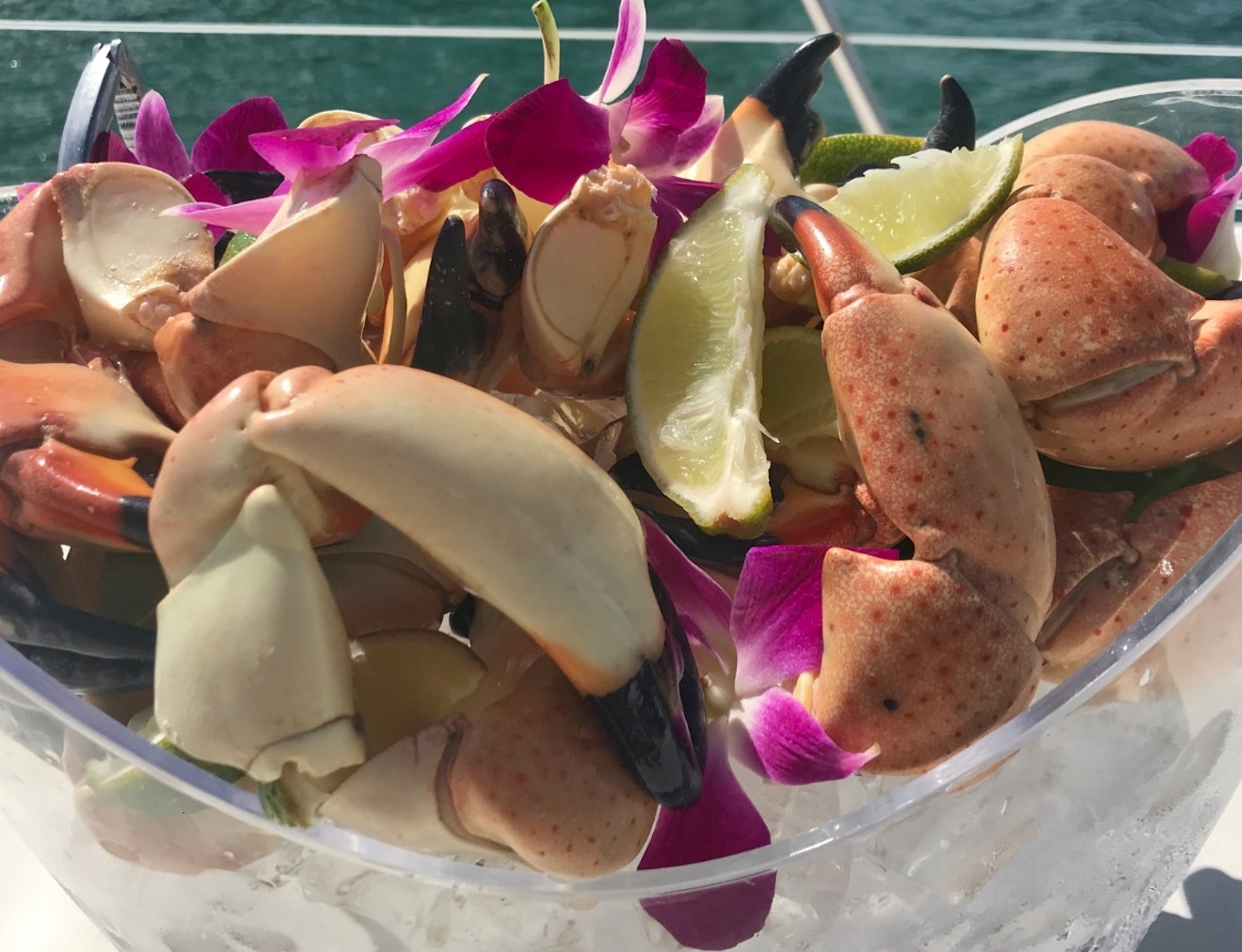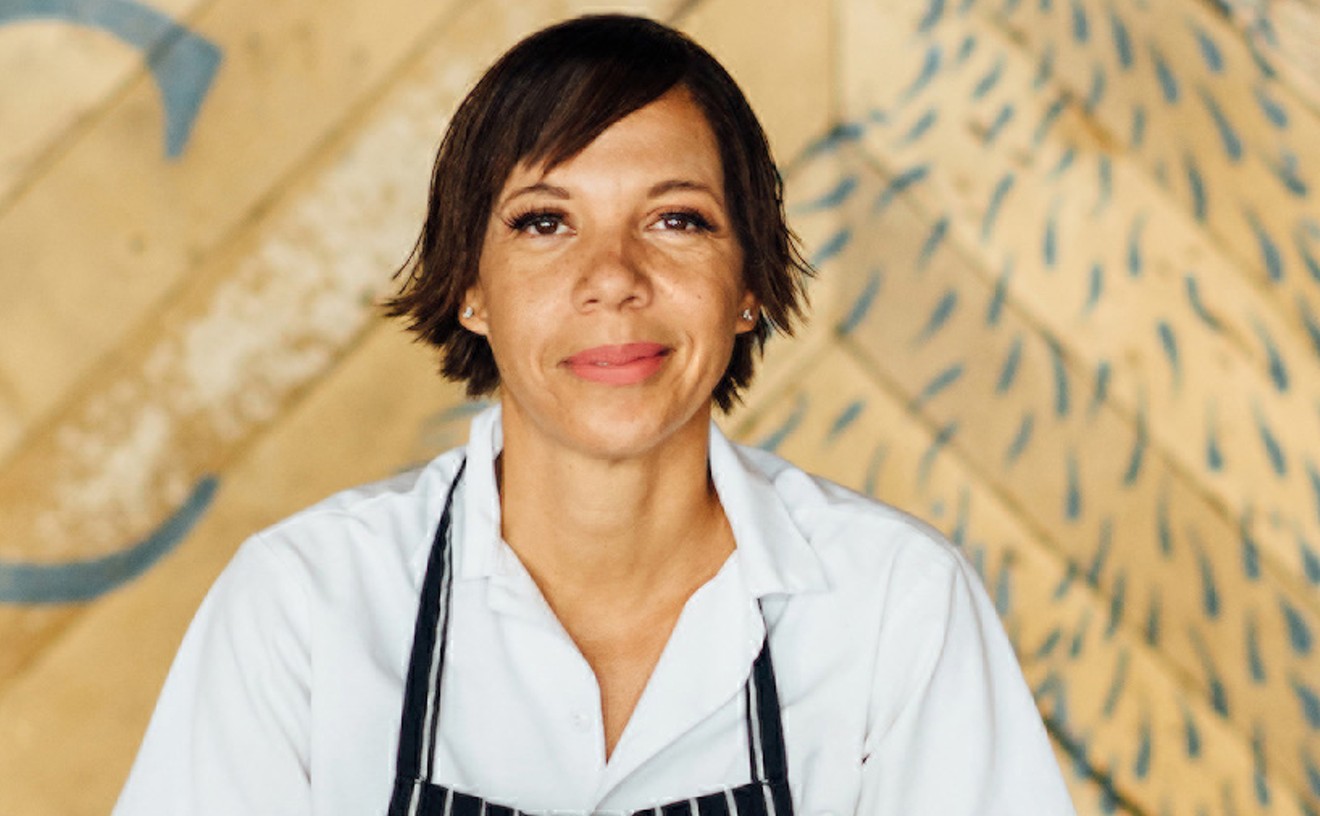Stone crab season officially began this week, which means Miami should be seeing claws sold everywhere from restaurants to markets.
But how can you tell whether the stone crabs you're eating are fresh or frozen? And does it even matter?
Roger Duarte, founder of the home delivery company George Stone Crab, says there's no sure way to tell until you crack the claw and eat it. "Really, the only thing you can do is buy from reputable people."
Duarte says fishermen are known to stockpile a supply of crabs in case there's a shortage in the future. Examples include storms that don't allow fishermen to pull traps and holiday season, when demand is high. "A fisherman can fish today, catch 100 pounds, and maybe hold 20 pounds and freeze them. Tomorrow he'll pull traps, catch 100 pounds, hold 20 and freeze them. Then, when New Year's Eve comes around the prices skyrocket because everyone wants stone crabs, that's when he sells them."
He says that sometimes even restaurateurs don't always know what they're getting. "Restaurants get their crabs from distributors, and the distributors from wholesalers. A chef or restaurant owner really needs to establish a good relationship."
Duarte skirts the supply chain and goes straight to the source. "Our relationship is with the boat captain. We have a clear connection and local partners," he says.
Mario Tan Jun agrees the source of the claws is key. As executive chef of Casablanca Seafood Bar & Grill (404 N. River Dr., Miami), he gets a shipment of claws from the Florida Keys about every other day. "Some are ready to go, and we have a boiler onsite to boil the claws and then ice them down."
Tan Jun says to inspect the claw for freshness. "If a claw is shiny, that's a good sign it's fresh." Duarte explains that if the meat is dry and sticks to the shell, it's likely frozen. "A fresh stone crab is juicy."
Duarte says that for the first few weeks of season, if a restaurant has an abundance of claws in all sizes, it might be a giveaway they're frozen. "For the two weeks, it's pretty low volume. Fishermen have to lay out their traps, and that costs gas and crew money. Let's say they have 100 traps. They won't put out all the traps at once. They'll pull the first traps to finance the next catch."
Asked what makes stone crabs so special, Duarte says it's the fact they're unique to Miami. "Stone crabs are iconic: They're wild-caught because you can't farm them, they're delicate, and there's a limited supply."
Tan Jun agrees they're unique. "The flavor of a stone crab can't be compared. When dipped in a homemade mustard sauce, it's the best." The secret ingredients of Casablanca's mustard sauce, in case you want to try to re-create it at home, are "mayonnaise, dry English mustard, Dijon mustard, A1 Sauce, a splash of Tabasco, and heavy cream," he says.
If you want fresh stone crabs, George Stone Crab offers claws on demand via georgestonecrab.com. George sells medium ($32.95/pound), large ($47.95/pound), jumbo ($57.95/pound), and colossal ($68.95/pound) claws. Prices may vary during the season. In addition, George Stone Crab offers claws in to-go packs at the My Ceviche kiosk in Terminal D of Miami International Airport. Duarte says the claws are ready to carry on domestic and international flights and have the proper paperwork for countries that require them. Duarte says stone crabs make a perfect gift if you're flying to visit a friend or relative.
Casablanca sells the claws at market price and will host a pop-up seafood shop at the South Florida Seafood Festival this Saturday and Sunday at Miami Marine Stadium.
South Florida Seafood Festival. Saturday, October 19, and Sunday, October 20, at Miami Marine Stadium, 3501 Rickenbacker Cswy., Miami. Tickets cost $14 to $39 via eventbrite.com.
[
{
"name": "Air - MediumRectangle - Inline Content - Mobile Display Size",
"component": "19274298",
"insertPoint": "2",
"requiredCountToDisplay": "2"
},{
"name": "Editor Picks",
"component": "17482312",
"insertPoint": "4",
"requiredCountToDisplay": "1"
},{
"name": "Inline Links",
"component": "18711090",
"insertPoint": "8th",
"startingPoint": 8,
"requiredCountToDisplay": "7",
"maxInsertions": 25
},{
"name": "Air - MediumRectangle - Combo - Inline Content",
"component": "17482310",
"insertPoint": "8th",
"startingPoint": 8,
"requiredCountToDisplay": "7",
"maxInsertions": 25
},{
"name": "Inline Links",
"component": "18711090",
"insertPoint": "8th",
"startingPoint": 12,
"requiredCountToDisplay": "11",
"maxInsertions": 25
},{
"name": "Air - Leaderboard Tower - Combo - Inline Content",
"component": "17482313",
"insertPoint": "8th",
"startingPoint": 12,
"requiredCountToDisplay": "11",
"maxInsertions": 25
}
]












